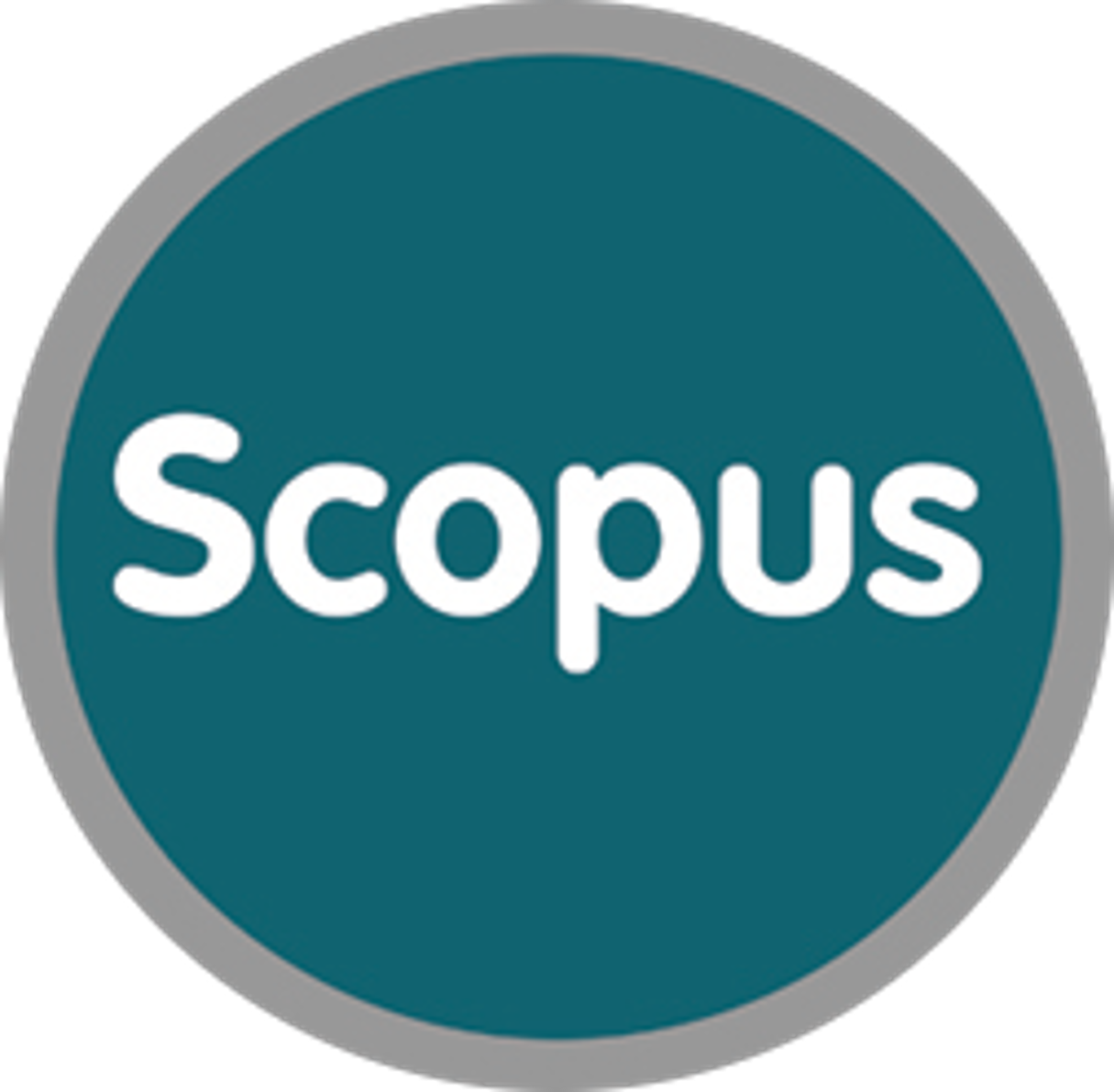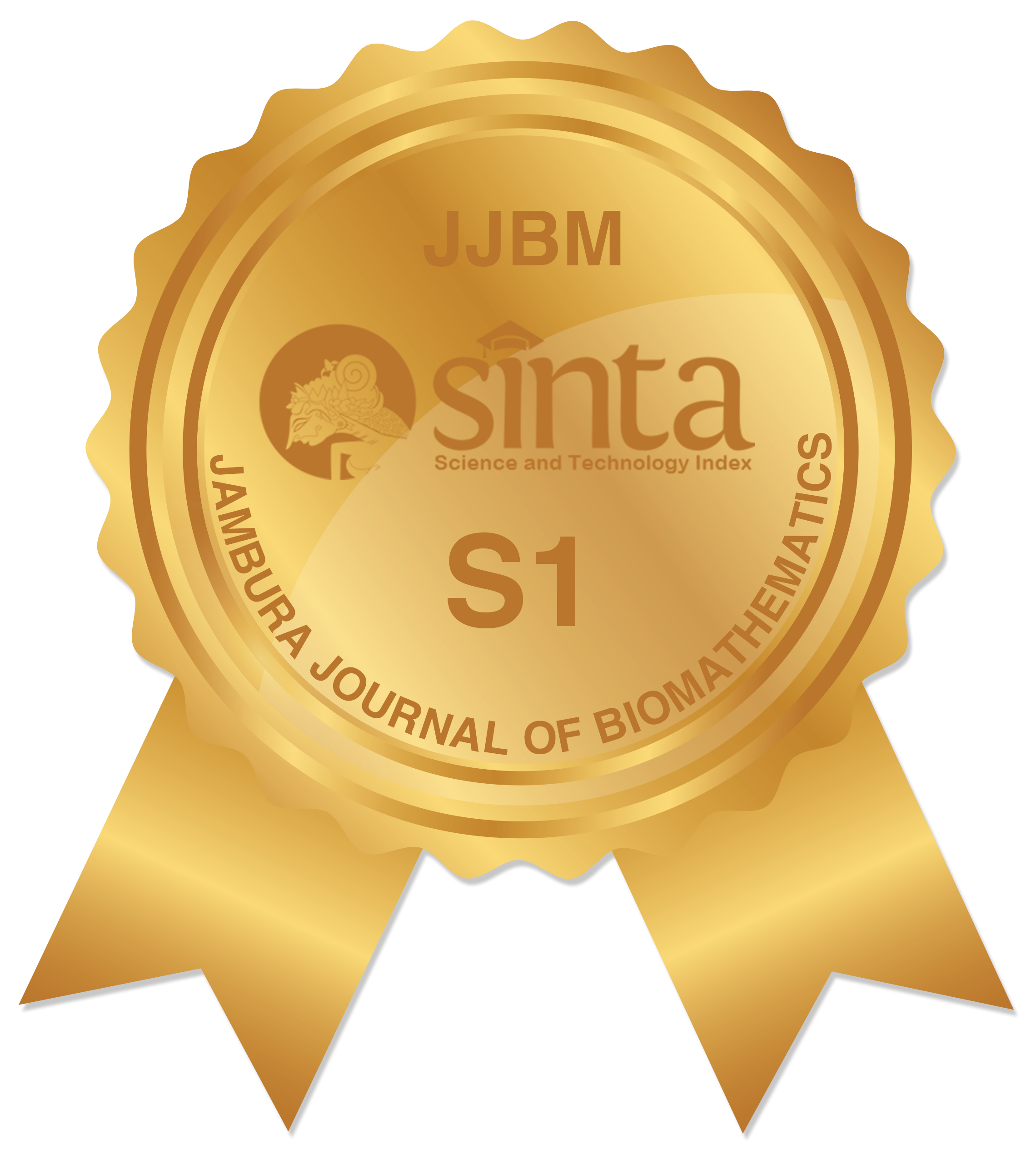Simulasi numerik model matematika untuk menganalisis relasi antara korupsi dan dinamika penyebaran penyakit menular
Abstract
Keywords
Full Text:
PDFReferences
C. G. N. Nathan Oigo Mokaya, Haileyesus Tessema Alemmeh and G. G. Muthuri, "Mathematical modelling and analysis of corruption of morals amongst adolescents with control measures in kenya" Discrete Dynamics in Nature and Society, vol. 2021, no. 6662185, p. 16, 2021. DOI: 10.1155/2021/6662185
D. Kesehatan, https://dinkes-kotakupang.web.id/cgi-sys/suspendedpage.cgi, 2021, [Online; accessed 11-Maret-2022].
H. S. Panigoro, E. Rahmi, N. Achmad, and S. L. Mahmud, "The Influence of Additive Allee Effect and Periodic Harvesting to the Dynamics of LeslieGower Predator-Prey Model" Jambura Journal of Mathematics, vol. 2, no. 2, pp. 87-96, 2020. DOI: 10.34312/jjom.v2i2.4566
H. S. Panigoro, A. Suryanto, W. M. Kusumawinahyu, and I. Darti, "Dynamics of an Eco-Epidemic Predator-Prey Model Involving Fractional Derivatives with Power-Law and Mittag-Leffler Kernel" Symmetry, vol. 13, no. 5, p. 785, 2021. DOI: 10.3390/sym13050785
M. Z. Ndii, Pemodelan Matematika. Penerbit NEM, 2022. ISBN 9786234231144
S. Athithan, M. Ghosh, and X.-Z. Li, "Mathematical modeling and optimal control of corruption dynamics" Asian-European Journal of Mathematics, vol. 11, no. 06, p. 1850090, 2018. DOI: 10.1142/S1793557118500900
K. Y. Lim, "Modelling the dynamics of corruption and unemployment with heterogeneous labour" Economic Modelling, vol. 79, pp. 98-117, 2019. DOI: 10.1016/j.econmod.2018.10.004
V. N. Kolokoltsov and O. A. Malafeyev, "Mean-Field-Game Model of Corruption" Dynamic Games and Applications, vol. 7, no. 1, pp. 34-47, 2017. DOI: 10.1007/s13235-015-0175-x
S. Brianzoni, R. Coppier, , and E. Michetti, "Complex dynamics in a growth model with corruption in public procurement" Discrete Dynamics in Nature and Society, vol. 2011, p. 27, 2011. DOI: 101155/2011/862396
A. K. Fantaye and Z. K. Birhanu, "Mathematical model and analysis of corruption dynamics with optimal control" Journal of Applied Mathematics, vol. 2022, no. 8073877, pp. 1-16, 2022. DOI: 10.1155/2022/8073877
DOI: https://doi.org/10.34312/jjbm.v3i1.14187
Copyright (c) 2022 Julieta B.A. Radja, Meksianis Zadrak Ndii

This work is licensed under a Creative Commons Attribution-NonCommercial 4.0 International License.
Jambura Journal of Biomathematics (JJBM) has been indexed by:
EDITORIAL OFFICE OF JAMBURA JOURNAL OF BIOMATHEMATICS |
 | Department of Mathematics, Faculty of Mathematics and Natural Science, Universitas Negeri Gorontalo Jl. Prof. Dr. Ing. B. J. Habibie, Moutong, Tilongkabila, Kabupaten Bone Bolango 96554, Gorontalo, Indonesia |
 | Email: [email protected] |
 | +6281356190818 (WA Only) |
 | Jambura Journal of Biomathematics (JJBM) by Department of Mathematics Universitas Negeri Gorontalo is licensed under a Creative Commons Attribution-NonCommercial 4.0 International License. Powered by Public Knowledge Project OJS. |
















